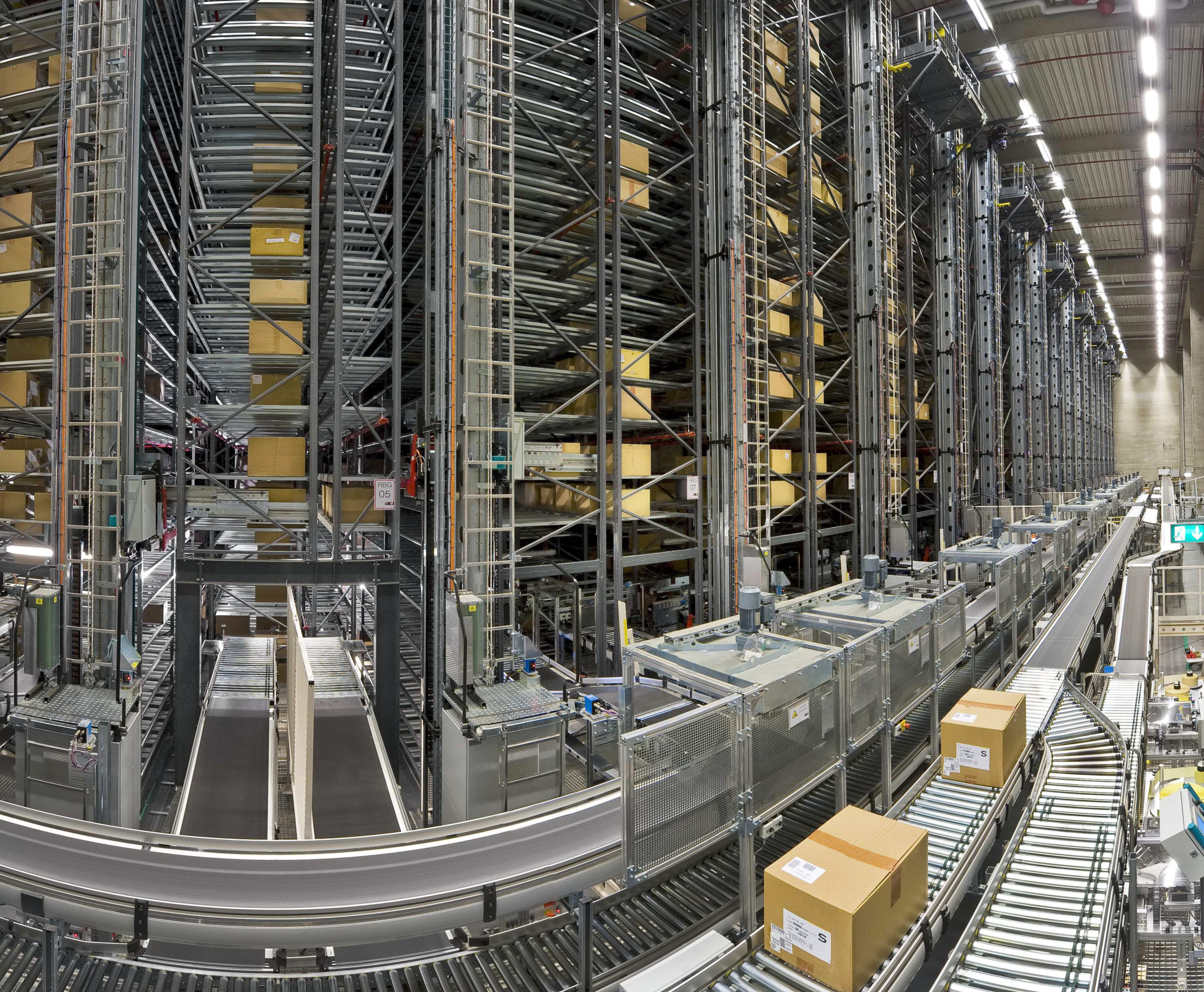Automated storage systems
The Automated Warehouse System for the Storage of Goods (ASRS) is a complex of racks and special handling devices that allows for the placement and collection of goods without the presence of a person at the place of operation. Due to the use of modern technology, the need for personnel is sharply reduced and the effective warehouse area is increased. Visually, the ASRS consists of vertical masts and horizontal guides, along which the shuttle that collects cargo moves. Reception and collection of goods can take place both with the use of a conveyor and without it. In the second case, further processing of goods in packages is carried out directly by the operators.
According to functional differences, several types of ASRS can be distinguished:
• For boxes.
• For pallets.
• For piece goods.
• Robotic manipulators.
• Sorting systems.
Most automated warehouse systems are made to order, taking into account the specifics of racks, cargo and premises. Therefore, the listed equipment can be supplemented with conveyors for transporting goods from the receiving area or to the loading site.
Areas of application of automated warehouse systems
The areas of use of automated warehouse systems are extremely extensive. This equipment can be mounted both in large warehouses of logistics and wholesale companies, and built into compact premises with an area of several tens of square meters. That is, even retail stores with a large amount of goods in the same type of packaging, for example, shoe stores, can use them. However, in retail, ASRS are still rare. The most suitable automated systems for handling pallets and boxes. In this case, equipment costs.
Carousel storage system
The system provides for a movable design of cells for storing goods. The racks are divided into sections, each has its own electric drive and control. In the vertical rack or horizontal row there is a special place for unloading goods. When the load is taken, the electric drive is turned on, and the cells begin to move around inside the rack in a circle using a chain mechanism. As soon as the desired package arrives at the unloading point, it is pushed out and transported automatically or with the help of a forklift. The main disadvantage of such a system is the inability to change the cell size. Therefore, these systems are often used in production warehouses with guaranteed pack sizes. In rooms with low ceilings, the carousel can be designed horizontally.
Lift storage system
Lift-type systems are built according to the type of classic racks. To move goods along them, a lifting and transport device (shuttle) is used, moving along the shelves. The advantage of lift racks is their blocky nature, which means that they can be quickly scaled in length and height. The cell size and capture mechanism can also be changed through upgrades or even programming. Lift type ASRS are particularly popular in general warehouses where container sizes can change over time.
Automated Gravity Shelving Storage System
Gravity racks are loaded from one side and unloaded from the other. The movement of boxes or pallets along the entire depth of the rack is carried out on rollers under the influence of its own gravity.
Automatic mechanized shuttles in the gravity system are only responsible for loading and picking up goods from the extreme points of the row. When commissioning the last pallet, the next one immediately moves to its place.
It is advisable to use such ASRS in wholesale warehouses with a small assortment. They allow the use of very deep shelving, maximizing effective storage space.


